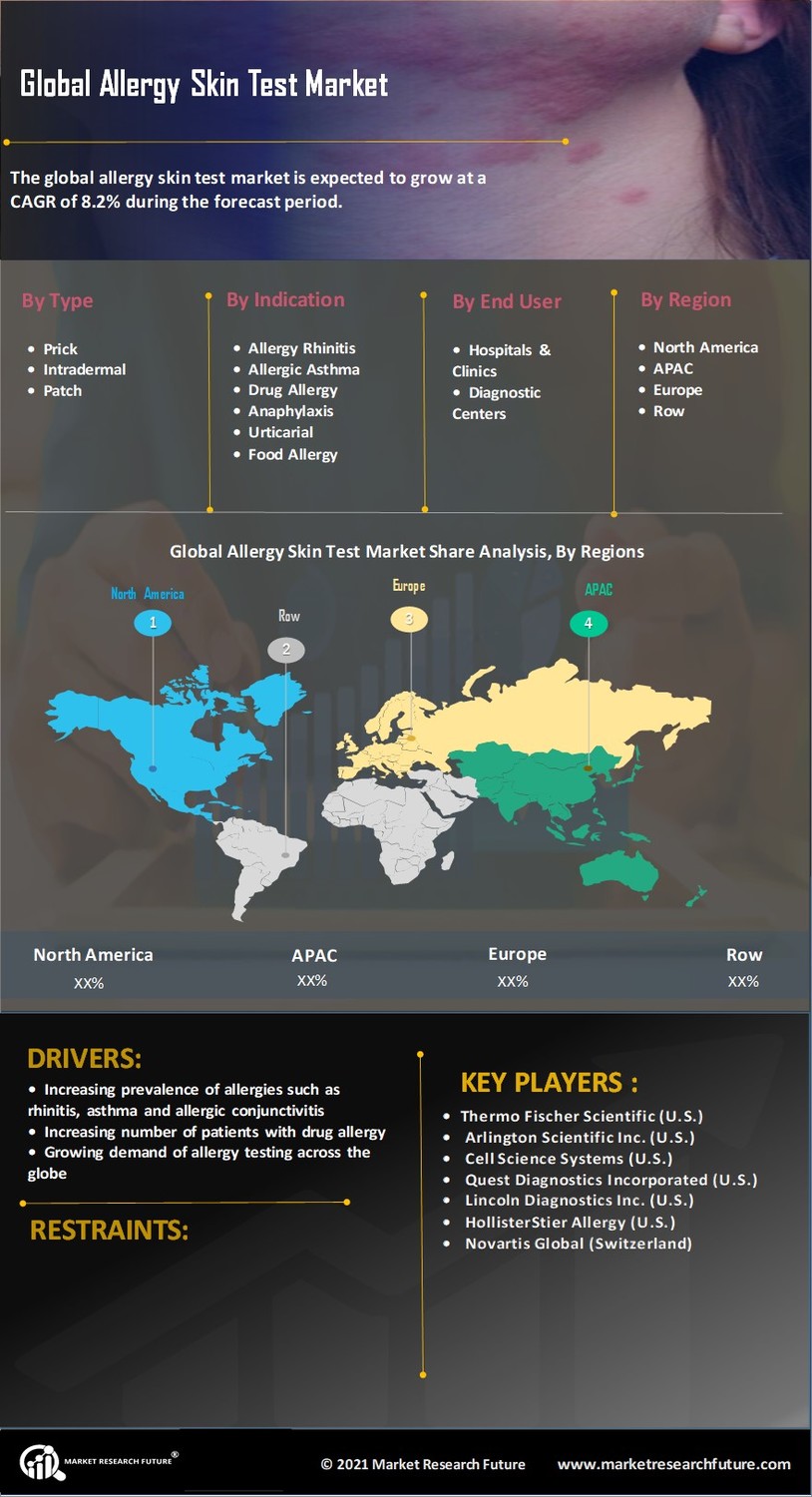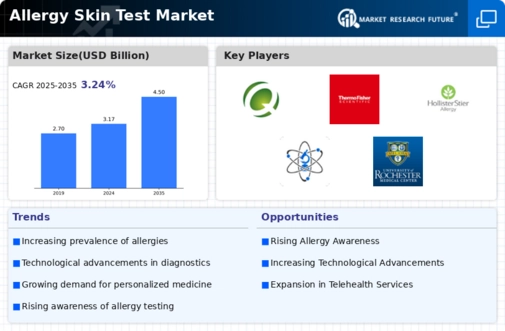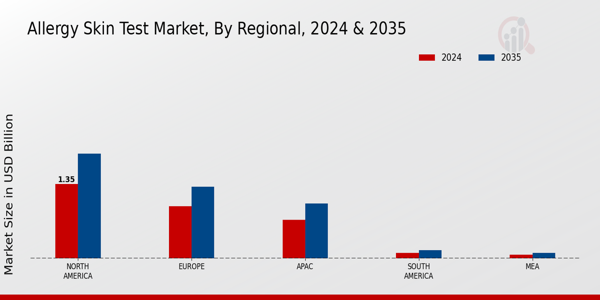Rising Healthcare Expenditure
The upward trend in global healthcare spending is positively influencing the Global Allergy Skin Test Market Industry. As countries allocate more resources to healthcare, there is a corresponding increase in funding for diagnostic services, including allergy testing. This trend is particularly evident in developed nations, where healthcare systems are increasingly prioritizing preventive care. The expansion of healthcare budgets is likely to facilitate greater access to allergy skin tests, thereby driving market growth. With the market expected to reach 3.17 USD Billion in 2024, the financial commitment to healthcare is crucial for enhancing allergy diagnostics.
Rising Prevalence of Allergies
The increasing incidence of allergic conditions globally drives the Global Allergy Skin Test Market Industry. According to health statistics, allergies affect a significant portion of the population, with estimates suggesting that around 30 percent of adults and 40 percent of children experience allergic reactions. This growing prevalence necessitates effective diagnostic tools, such as skin tests, to identify allergens. As a result, the market is projected to reach 3.17 USD Billion in 2024, reflecting the urgent need for accurate allergy testing solutions. The demand for skin tests is likely to rise as awareness of allergies continues to grow.
Increased Awareness and Education
Growing awareness about allergies and their management is a significant driver of the Global Allergy Skin Test Market Industry. Public health campaigns and educational initiatives are informing individuals about the importance of allergy testing. As more people recognize the benefits of identifying allergens, the demand for skin tests is likely to increase. This heightened awareness is expected to contribute to the market's expansion, with projections indicating a market value of 4.5 USD Billion by 2035. The proactive approach to allergy management is fostering a culture of testing, which is crucial for effective treatment.
Regulatory Support for Allergy Testing
Supportive regulatory frameworks are fostering growth in the Global Allergy Skin Test Market Industry. Governments and health organizations are implementing guidelines that promote the use of allergy testing as a standard practice in clinical settings. This regulatory backing not only enhances the credibility of allergy skin tests but also encourages healthcare providers to adopt these diagnostic tools. As a result, the market is poised for growth, with projections indicating a value of 4.5 USD Billion by 2035. The alignment of regulatory policies with public health objectives is essential for the advancement of allergy diagnostics.
Technological Advancements in Testing Methods
Innovations in allergy testing technology are propelling the Global Allergy Skin Test Market Industry forward. Enhanced testing methods, including the development of more precise and less invasive skin tests, are becoming increasingly available. These advancements improve the accuracy of results and reduce patient discomfort, which may lead to higher adoption rates among healthcare providers. As the market evolves, it is anticipated that these technological improvements will contribute to a compound annual growth rate (CAGR) of 3.24% from 2025 to 2035. This growth reflects the ongoing commitment to improving allergy diagnostics and patient care.







